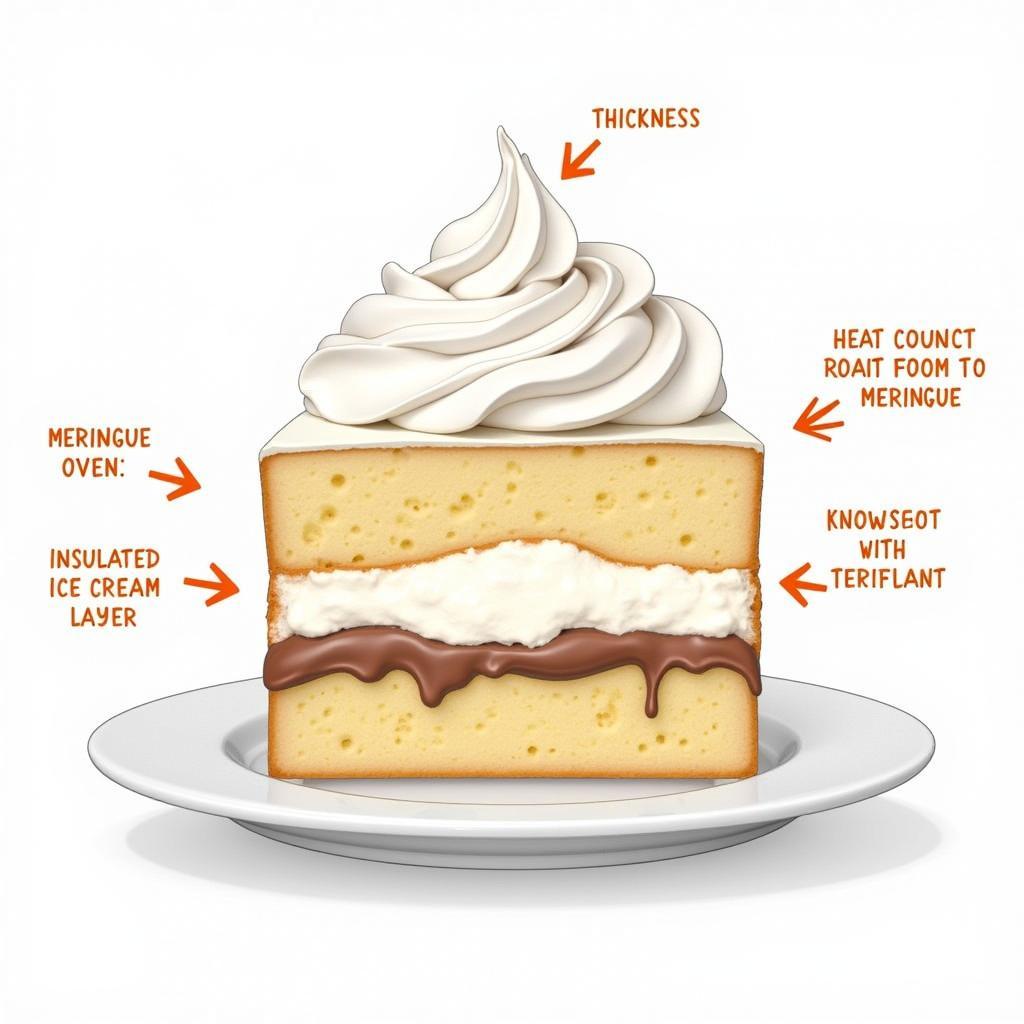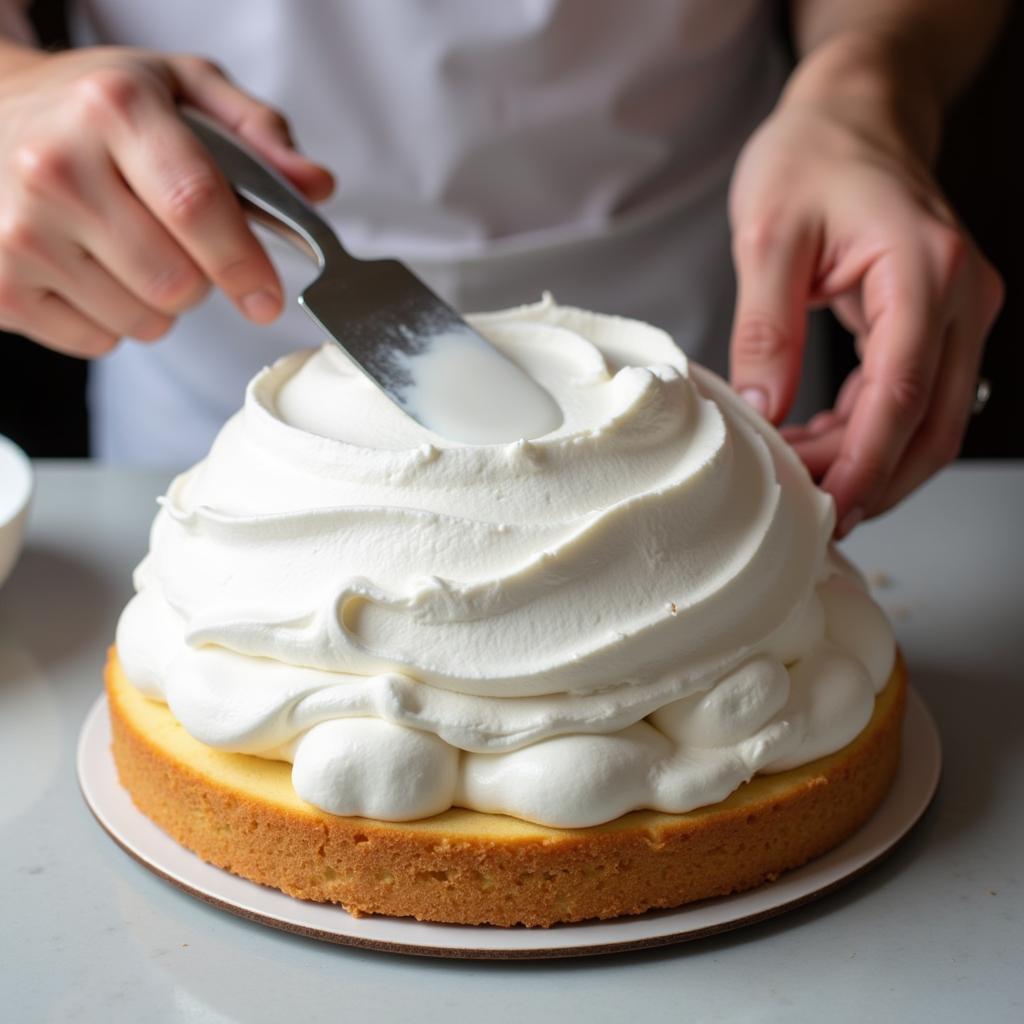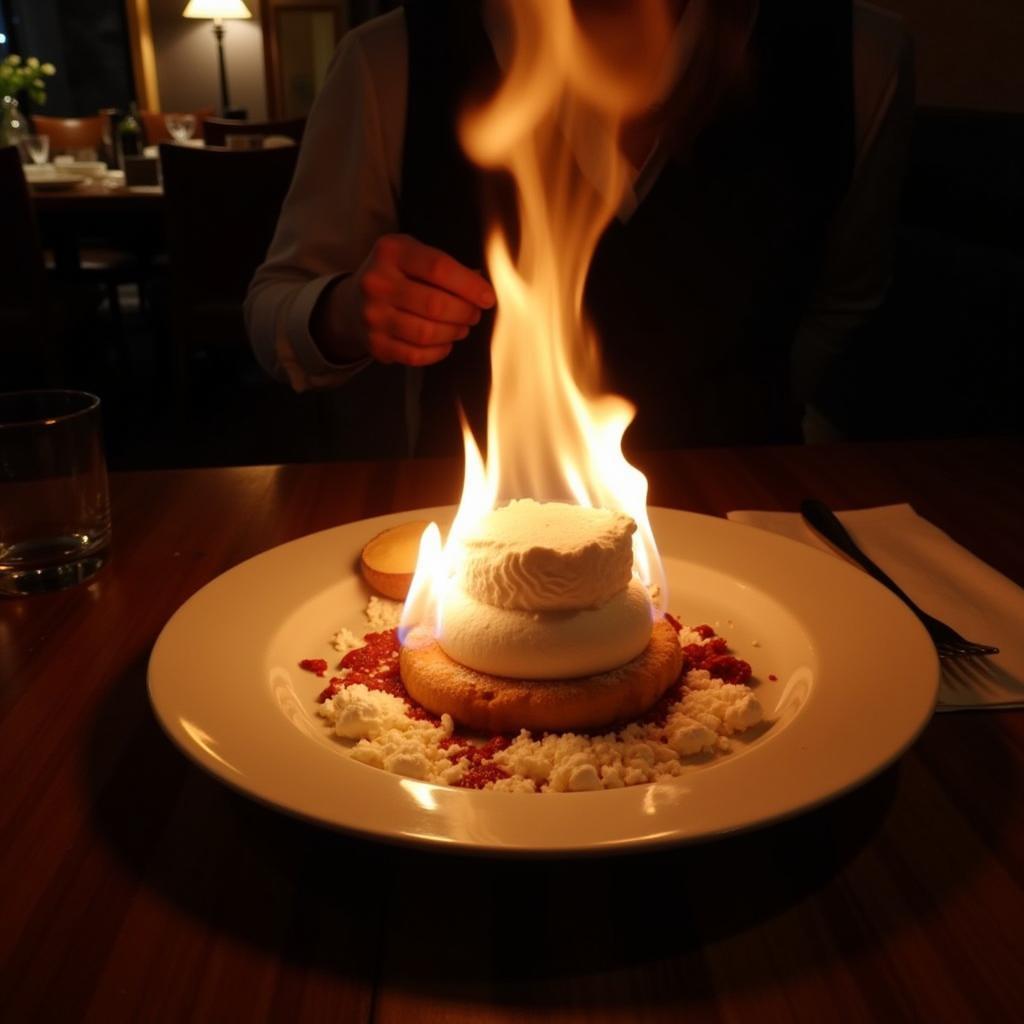Unveiling the Mystery of Baked Alaska: A Culinary Adventure
November 2, 2024Baked Alaska, a dessert of ice cream encased in meringue and browned in a hot oven, is a true culinary spectacle. This intriguing dessert, with its contrasting temperatures and textures, often leaves people wondering how it’s possible to bake ice cream without it melting. This article will delve into the history, science, and art of creating this impressive dessert.
The History and Origins of Baked Alaska
The fascinating history of Baked Alaska is shrouded in some mystery, with various claims to its invention. Some attribute its creation to Thomas Jefferson, who reportedly served a similar dish at the White House in the early 1800s. Others believe it originated in France, where it was known as “Omelette Norvégienne” or Norwegian Omelette. However, the name “Baked Alaska” likely emerged in the 1870s at Delmonico’s Restaurant in New York City, possibly in honor of the newly acquired Alaskan territory. Regardless of its true origin, Baked Alaska has become a beloved dessert worldwide, symbolizing both culinary ingenuity and a touch of showmanship.
The Science Behind a Successful Baked Alaska
The magic of Baked Alaska lies in the insulating properties of meringue. The airy, egg-white-based meringue acts as a protective shield, preventing the heat of the oven from reaching the ice cream core. This insulation works because air is a poor conductor of heat. The quick baking time also contributes to the dessert’s success. The meringue browns quickly, while the ice cream remains frozen within its protective shell.
 Baked Alaska Cross-Section Diagram Showing Meringue Insulation
Baked Alaska Cross-Section Diagram Showing Meringue Insulation
The cake layer, often used as a base, also provides a slight insulating layer and structural support. It helps to further protect the ice cream from melting. Understanding this basic scientific principle is key to mastering the art of creating this impressive dessert.
Mastering the Art of Making Baked Alaska
Creating a Baked Alaska is a multi-step process that requires some planning and preparation. First, a base layer, typically a sponge cake or brownie, is prepared and frozen. Next, a layer of softened ice cream is spread over the cake and returned to the freezer to harden. Finally, the meringue is whipped and spread evenly over the ice cream, ensuring a complete seal. The entire dessert is then quickly browned in a very hot oven or using a kitchen torch.
 Preparing Baked Alaska: Applying the Meringue
Preparing Baked Alaska: Applying the Meringue
Tips and Tricks for a Perfect Baked Alaska
- Freeze the ice cream solid: A firm ice cream base is crucial for preventing melting.
- Work quickly: Once the meringue is applied, bake or torch the dessert immediately.
- Ensure a complete meringue seal: Any gaps in the meringue will allow the heat to reach the ice cream and cause it to melt.
- Use a very hot oven or a kitchen torch: High heat ensures quick browning of the meringue.
What are some variations of Baked Alaska?
Baked Alaska can be customized with various flavors and toppings. Consider adding liqueurs, fruits, or nuts to the meringue or ice cream for a unique twist.
Can I make Baked Alaska ahead of time?
Yes, the dessert can be assembled and frozen ahead of time, making it a convenient dessert for entertaining.
“A well-made Baked Alaska is a testament to culinary skill,” says renowned pastry chef, Jean-Pierre Dubois. “It’s a perfect blend of contrasting temperatures and textures, a true culinary experience.”
 Baked Alaska with Flaming Presentation
Baked Alaska with Flaming Presentation
Conclusion
Baked Alaska is more than just a dessert; it’s a culinary adventure. By understanding the science behind its creation and following a few simple tips, anyone can master this impressive dessert and wow their guests. So why not embark on this culinary journey and experience the magic of Baked Alaska?
FAQs
- What type of ice cream works best for Baked Alaska? Any firm ice cream will work, but avoid ice cream with a high water content as it may melt more easily.
- Can I use a blowtorch instead of an oven? Yes, a kitchen torch is a great option for browning the meringue quickly and evenly.
- How long should I bake Baked Alaska? Only a few minutes are needed to brown the meringue in a very hot oven.
- Can I freeze Baked Alaska after baking? It’s best to serve Baked Alaska immediately after browning the meringue.
- What can I do if my meringue cracks? Ensure the meringue is spread evenly and quickly to prevent cracking.
- Can I make individual Baked Alaskas? Yes, individual servings can be created using ramekins or small bowls.
- What is the best way to store Baked Alaska before serving? Store it in the freezer, tightly wrapped in plastic wrap.
Suggested further reading:
- “The Art of French Desserts”
- “Modernist Cuisine at Home”
For assistance, contact us at Phone Number: 0963418788, Email: [email protected] or visit our address: 2M4H+PMH, Phường Nghĩa Thành, Gia Nghĩa, Đắk Nông, Việt Nam. We have a 24/7 customer service team.